Genre Science. Page - 2

833- -Confirmation of Chladni's hypothesis of 1794--The aurora borealis--Franklin's suggestion that it is of electrical origin--Its close association with terrestrial magnetism--Evaporation, cloud-formation, and dew--Dalton's demonstration that water exists in the air as an independent gas--Hutton's theory of rain--Luke Howard's paper on clouds--Observations on dew, by Professor Wilson and Mr. Six--Dr. Wells's essay on dew--His observations on several appearances connected with dew--Isotherms and ocean currents--Humboldt and the-science of comparative climatology--His studies of ocean currents-- Maury's theory that gravity is the cause of ocean currents-- Dr. Croll on Climate and Time--Cyclones and anti-cyclones, --Dove's studies in climatology--Professor Ferrel's mathematical law of the deflection of winds--Tyndall's estimate of the amount of heat given off by the liberation of a pound of vapor--Meteorological observations and weather predictions.
CHAPTER VI
. MODERN THEORIES OF HEAT AND LIGHT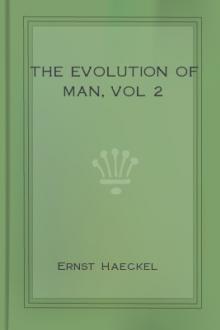
plete idea of the past development ofman's ancestors within the vertebrate stem by putting together andcomparing the embryological developments of the various groups ofvertebrates. And when we go below the lowest vertebrates and comparetheir embryology with that of their invertebrate relatives, we canfollow the genealogical tree of our animal ancestors much farther,down to the very lowest groups of animals.
In entering the obscure paths of this phylogenetic labyrinth, clingingto the Ariadne-thread of the biogenetic law and guided by the light ofcomparative anatomy, we will first, in accordance with the methods wehave adopted, discover and arrange those fragments from the manifoldembryonic developments of very different animals from which thestem-history of man can be composed. I would call attentionparticularly to the fact that we can employ this method with the sameconfidence and right as the geologist. No geologist has ever hadocular proof that the vast rocks that compose our Carboniferous
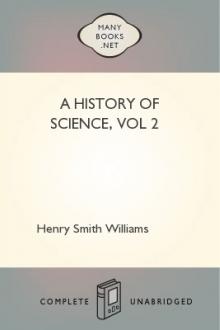
was any sudden change in the level of mentality of the Roman world at the close of the classical period. We must assume, then, that the direction in which the great minds turned was for some reason changed. Newton is said to have alleged that he made his discoveries by "intending" his mind in a certain direction continuously. It is probable that the same explanation may be given of almost every great scientific discovery. Anaxagoras could not have thought out the theory of the moon's phases; Aristarchus could not have found out the true mechanism of the solar system; Eratosthenes could not have developed his plan for measuring the earth, had not each of these investigators "intended" his mind persistently towards the problems in question.
Nor can we doubt that men lived in every generation of the dark age who were capable of creative thought in the field of science, bad they chosen similarly to "intend" their minds in the right direction. The difficulty was that they did not so choose. Their minds had

Ptolemy succeeded in devising a scheme by which the apparent changes that take place in the heavens could, so far as he knew them, be explained by certain combinations of circular movement. This seemed to reconcile so completely the scheme of things celestial with the geometrical instincts which pointed to the circle as the type of perfect movement, that we can hardly wonder Ptolemy's theory met with the astonishing success that attended it. We shall, therefore, set forth with sufficient detail the various steps of this famous doctrine.
Ptolemy commences with laying down the undoubted truth that the shape of the earth is globular. The proofs which he gives of this fundamental fact are quite satisfactory; they are indeed the same proofs as we give today. There is, first of all, the well-known circumstance of which our books on geography remind us, that when an object is viewed at a distance across the sea, the lower part of the object appears cut off by the interposing curved mass of water.
The sagacity of Ptolemy enabled him to adduce another argument, which, though not quite so obvious as that just mentioned, demonstrates the curvature of the earth in a very impressive manner to anyone who will take the trouble to understand it. Ptolemy mentions that travellers who went to the south

oration and study of these antiquities is stated as follows: "Although possessing throughout certain general points of resemblance going to establish a kindred origin, these works nevertheless resolve themselves into three grand geographical divisions, which present in many respects striking contrasts, yet so gradually merge into each other that it is impossible to determine where one series terminates and another begins." On the upper lakes, and to a certain extent in Michigan, Iowa, and Missouri, but particularly in Wisconsin, the outlines of the inclosures (elsewhere more regular in form) were designed in the forms of animals, birds, serpents, and even men, appearing on the surface of the country like huge relievos. The embankment of an irregular inclosure in Adams County, Ohio, is described as follows by Squier and Davis, Mr. Squier having made the drawing of it for the work published by the Smithsonian Institution:
"It is in the form of a serpent, upward of 1000 feet in length, extended i
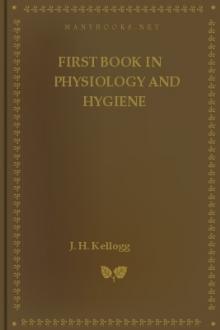
The skeleton is made up of many different parts, each of which is called a bone.
3. The bones are covered by the flesh.
4. The bones of the head form the skull, which is hollow and contains the brain.
5. A row of bones arranged in the back, one above another, forms the backbone. The backbone has a canal running through it lengthwise, in which lies the spinal cord.
6. The trunk is hollow, and has two chambers, one called the cavity of the chest, and the other the cavity of the abdomen.
7. The chest contains the two lungs and the heart.
8. The abdomen contains the stomach, liver, and many other very important organs.
9. Is it not our duty to take good care of our bodies as we would of some nice present from a friend?
CHAPTER IV.
OUR FOODS.
~1.~ We all know very well that if we do not eat we shall rapidly lose in weight, and become very weak and feeble. Did you ever think how much

years ago, a distinguishedbiologist wrote in the Frankfurter Zeitung that it would secureimmortality for its author, the most notable critic of the idea ofimmortality. And the Daily Telegraph reviewer described the Englishversion as a "handsome edition of Haeckel's monumental work," and "anissue worthy of the subject and the author."
The influence of such a work, one of the most constructive thatHaeckel has ever written, should extend to more than the few hundredreaders who are able to purchase the expensive volumes of the originalissue. Few pages in the story of science are more arresting andgenerally instructive than this great picture of "mankind in themaking." The horizon of the mind is healthily expanded as we followthe search-light of science down the vast avenues of past time, andgaze on the uncouth forms that enter into, or illustrate, the line ofour ancestry. And if the imagination recoils from the strange andremote figures that are lit up by our search-light, and hesitates toaccep

ctor, whether one looks from one eye to the other, or from some more distant object to one's own eyes, the eyes may be seen now in one position and now in another, but never in motion." This phenomenon was described by Graefe,[6] who believed it was to be explained in the same way as the illusion which one experiences in a railway coach when another train is moving parallel with the coach in which one sits, in the same direction and at the same speed. The second train, of course, appears motionless.
[5] Dodge, Raymond, PSYCHOLOGICAL REVIEW, 1900, VII., p. 456.
[6] Graefe, A., Archiv f. Ophthalmologie, 1895, XLI., 3, S. 136.
This explanation of Graefe is not to be admitted, however, since in the case of eye-movement there are muscular sensations of one's own activity, which are not present when one merely sits in a coach. These sensations of eye-movement are in all cases so intimately connected with our perception of the movement of objects, that they may not be in this case simpl
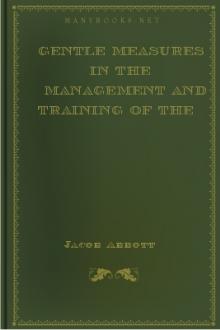
of the children a conviction of the truth of what they say; while, on theother hand, those who, in theory at least, occupy the position thatthe direct falsifying of one's word is never justifiable, act at adisadvantage in attempting this method. For although, in practice, they areoften inclined to make an exception to their principles in regard to truthin the case of what is said to young children, they can not, after all,tell children what they know to be not true with that bold and confidentair necessary to carry full conviction to the children's minds. They areembarrassed by a kind of half guilty feeling, which, partially at least,betrays them, and the children do not really and fully believe what theysay. They can not suppose that their mother would really tell them whatshe knew was false, and yet they can not help perceiving that she does notspeak and look as if what she was saying was actually true.
Monsieur and Madame Croquemitaine.
In all countries there are many,
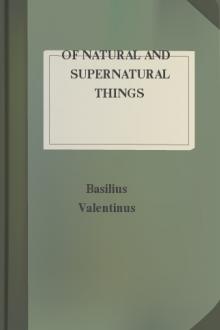
s which are performed by Conjurations, are neither Natural nor Supernatural, but Diabolical, belonging unto Sorcery, and are prohibited all good Christians; so likewise all those Means which oppose Holy Writ, Gods Word and Commandments, are to be rejected and refuted by true Natural Cabalists; I say this, because a certain distinction and sure order ought to be found of the Natural, Supernatural, Unnatural things.
In like manner there appertains unto Supernatural things, all the Water-Spirits, as the Syrens, Succubi, & other Water-Nymphs, with their Relations, as likewise the Terrestrial Spirits, and those which inhabit the Air, who sometimes are heard, seen, or perceived, sometimes foretelling Death or other Disasters, sometimes they discover by their Apparition Riches and good Fortune in certain places, and the Fiery Spirits appertain here also, which appear in a fiery shape, or like a burning Light; all these are Spirits having untangible Bodies, yet are they not such Spirits a